Half Past Human by T.J. Bass
‘Civilization is too high a price to pay for survival’
Moon from Half Past Human
I don’t know what made me buy Half Past Human (1971) by T.J. Bass fifteen years ago. It was one of those books I had always seen on the used book store shelves, but nothing about the cover (the basis on which I tended to buy unknown books back then) made me go “Gotta buy it.” Something on the back cover, though, must have caught my attention that day, because I plunked my money down on the counter of Red Bank, NJ’s (sadly, long gone) Book Pit. I started reading it on the ride home, and before I knew it I was a third of the way done. A week later I made a circuit of used book stores to get my hands on the sequel, The Godwhale (1974).
Initially published by Ballantine, Gollancz released the duology in 2014 as part of its Masterworks collection. If you’re a sci-fi reader of a certain age, or a student of the genre, you’ll recognize most of the books in the collection, definitely most of the authors. But with only two books published nearly fifty years ago, I wonder how many know Bass’s name today. Which is a shame.
The fear of overpopulation was immense in the late sixties. Paul Ehrlich’s 1968 The Population Bomb promised that if population growth was not brought under control, humanity faced oblivion. Regular famines, overcrowded cities, a polluted environment, and dwindling natural resources seemed to be our future. Science fiction was examining the problem with books like Harry Harrison’s Make Room! Make Room! (1966) (the basis for the Charlton Heston sci-fi noir Soylent Green) and John Brunner’s Stand On Zanzibar (1968). This fear set the stage for Bass’s vision of Earth crushed by the weight of three trillion people.
In this, the third millennium, Earth was avocado and peaceful. Avocado, because all land photosynthesized; and peaceful, because mankind was evolving into the four-toed Nebish — the complacent hive citizen.
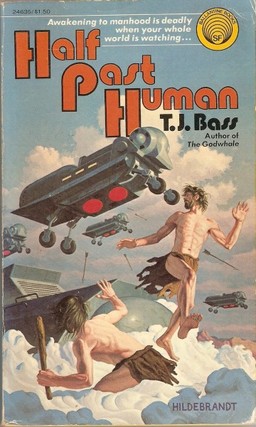 If our ranks were to swell into the trillions, what would humanity have to do to survive? How would it have to evolve? In Half Past Human, the lives of Earth’s masses are ruled by the ES, the Earth Society. To create a species that can survive the smothering population density and reduced caloric and nutrient intake, the ES has bred and modified humans to where they stand about four feet tall, rarely live more than thirty years, and are prevented from entering puberty. To accomodate the endless masses, mile deep cities have been sunk into the ground, connected to each other by tunnels. In weeding out the traits that hamper humans from living under the conditions of the hive, such as those associated with violence and ambition, their fifth toe has vanished.
If our ranks were to swell into the trillions, what would humanity have to do to survive? How would it have to evolve? In Half Past Human, the lives of Earth’s masses are ruled by the ES, the Earth Society. To create a species that can survive the smothering population density and reduced caloric and nutrient intake, the ES has bred and modified humans to where they stand about four feet tall, rarely live more than thirty years, and are prevented from entering puberty. To accomodate the endless masses, mile deep cities have been sunk into the ground, connected to each other by tunnels. In weeding out the traits that hamper humans from living under the conditions of the hive, such as those associated with violence and ambition, their fifth toe has vanished.
The only groups of pure-strain, five-toed humans live out in the wild lands, prising a living by stealing from the ES’s crops. Called buckeyes, the ES spares no expense to stop them. Hunters, armed with bows and arrows, are sent out regularly to eliminate the threat to the hive’s food supply. Citizens who excel at their jobs are rewarded by being allowed to join in on a hunt. Pumped up with drugs, their melanin-deficient skin protected with UV-proof gear, it’s one of the few ways for citizens to let out any aggression they’ve built up. It’s in the midst of the ongoing conflict between the ES’s hunters and the five-toed savages that a third force arrives, intending to shake things up on Earth. This new power’s appearing leads directly to the first war on Earth in over a thousand years, with millions of lives snuffed out by starvation and a nuclear detonation.
Half Past Human features a cast that includes four-toed technicians, hunters, and bureaucrats, five-toed tribesmen, a variety of artificial intelligences, over a million people revived after a millenium of cryogenic sleep, and the last dog on Earth. It’s through their eyes we slowly see patterns form. First, the hive is crumbling: replacement parts are becoming scarce, infrastructure breakdowns occur more frequently, and, as the five-toed gene-carrying population is thinned out, the Nebishes are becoming weaker. Second, a pair of artifical intelligences, a slim rod called Toothpick and a glowing sphere called Ball, are directing the buckeye tribes toward some greater, though unclear, path on behalf of a mysterious force called Olga. Both among the buckeyes and in the hive, Olga is thought to be some sort of deity who will appear one day and bodily remove its worshippers up to Paradise.
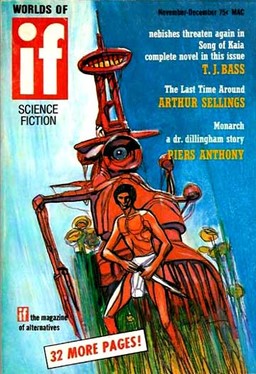 On the surface, Half Past Human is about the conflict between weak city dwellers and wilderness-dwelling savages, something that’s featured in more sci-fi stories than I can possibly number. If that’s all the novel was, it would not be noteworthy. What separates Bass from the rest of the herd are his prose and the intricate details of the hive and the wild lands.
On the surface, Half Past Human is about the conflict between weak city dwellers and wilderness-dwelling savages, something that’s featured in more sci-fi stories than I can possibly number. If that’s all the novel was, it would not be noteworthy. What separates Bass from the rest of the herd are his prose and the intricate details of the hive and the wild lands.
Bass was a doctor, and he brought his knowledge to bear in this novel. The Nebishes and their AIs speak in a language almost devoid of emotive content. Biological events and traumas are described in strictly clinical terms. Not only does it help stress the apparent Nebish lack of emotion about their frailty, it also lends to humorous exchanges:
“So? Don’t you have anyone who would carry for you?”
“No,” said Tinker, irritated. “Who’d carry for free?”
Val nodded. “I know what you mean. None of the polarized females seem to want to go gravid for a class three unless — unless they feel something personal for the budparent. Don’t you have any friends with uteri?”
The dank, cramped world of the hive is only horrifying to citizens who have been “polarized,” allowing their secondary sex characteristics to develop. Only then do they start to see themselves and others as individuals. When Tinker is polarized in order to secure a partner, his whole view of the hive begins to change:
Tinker noticed a subtle change in the tubeway crowds. They were no longer a monotonous sea of faces. He was certain that the retinal images were still the same. Only now his visual cortex began to sort those images into neuts and polarized. The neuts faded into the background of Nebish nothings — a pasty collage of empty faces. The polarized, both male and female, instantly attracted his attention — sullen males — shapely fems. About one in a thousand appeared polarized.
His home spiral used to be just mildly unpleasant. That changed too. Rats and lice caught his eye. Maggotty bodies angered him. Then, for the first time, he noticed the begger — fat and edematous. He knew this discovery was due to his new visual sorting, for the begger had obviously been there months — paralyzed — slowly dying of the wet beriberi.
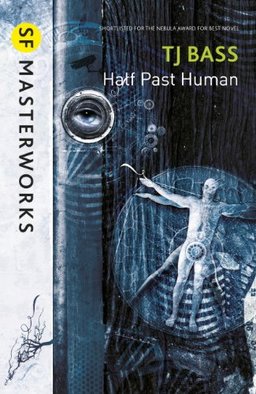 Bass takes time to explore various aspects of life among the Nebishes such as their home life, their superstitions, and their entertainment. He also looks at the practical implications of a planet where the only significant remaining source of protein is the Nebishes themselves.
Bass takes time to explore various aspects of life among the Nebishes such as their home life, their superstitions, and their entertainment. He also looks at the practical implications of a planet where the only significant remaining source of protein is the Nebishes themselves.
Tinker’s men staggered into the next shaft station lopping off Watcher optics. A squad of Security blundered into the axemen walking point and were dismembered. Several of the naked buckeyes squatted down beside an eviscerated guard to eat the liver. Others began to divide up a couple of citizens. Tinker looked at the watery, gray liver being passed around.
‘That may fill you up, but it won’t ease the hunger pangs — too deficient in the MDR. Protein-poor protoplasm. Stick tot he browner livers of their best hunters,’ he advised.
The great shaft cities, burrowed straight down into the earth, are described in horrible detail. The dead and dying line the walkways until the Sweeper crews collect them for the food processing plants. Behind the walls lie thousands of miles of electrical conduit and nests of rats — an occasional source of protein and variation in flavor for ambitious Nebishes. When there’s a major transit tube collapse and a million people are trapped, instead of waiting for them to die, the man responsible for routing the tubes just shunts them directly to the processing plants.
The world of the buckeyes is not all that much better. They live in constant fear of starvation, or sudden death from a well-aimed arrow. The only completely safe places are at altitudes above ten thousand feet. Some of them have even been turning more bestial, developing hibernation and mating cycles.
The characters of Half Past Human are as fully realized as is the setting. There is Val, the loyal director of Hunter Central and his starry-eyed coworker Walter. Moses Eppendorf and Tinker are citizens who rebel against the overwhelming power of the hive. Moon and his dog, Dan, are survivors of genetic experiments that shut off their biological clocks, and have wandered the Earth for two centuries. By the end, the reader’s given a chance to sympathize with all the primary characters, whatever faction they’re from, and even if they’ve killed hundred of thousands of people.
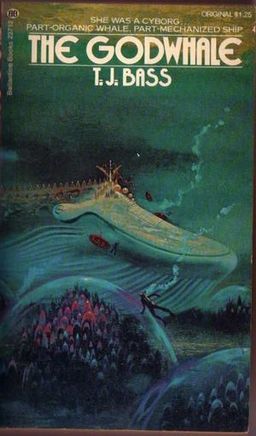 Some of the most memorable moments in the book have little to do with the primary story about the ES trying to eradicate the buckeyes. Val’s rat hunt inside the walls of his home shaft is a high point of graphic creepiness in a book filled with loads of squicky moments. Moses’s exploration of the giant slime mold is wonderfully weird. The various intelligent machines, the mecks, are hilarious, particularly the musical Nebish-hypnotizing GITAR (Guitar Identity Thoracic Autonomic Resonator). This book is another reminder that you don’t need a thousand pages to create a fully realized new world.
Some of the most memorable moments in the book have little to do with the primary story about the ES trying to eradicate the buckeyes. Val’s rat hunt inside the walls of his home shaft is a high point of graphic creepiness in a book filled with loads of squicky moments. Moses’s exploration of the giant slime mold is wonderfully weird. The various intelligent machines, the mecks, are hilarious, particularly the musical Nebish-hypnotizing GITAR (Guitar Identity Thoracic Autonomic Resonator). This book is another reminder that you don’t need a thousand pages to create a fully realized new world.
Bass didn’t use overpopulation as a mere story hook. All the action, all the humor, are underpinned by surprisingly serious discussions. Just how far should (or can) utilitariansim be pushed? If eliminating a million, two million, even ten million people, makes things marginally better for trillions more, can that ever be seen as a good thing? Is the secret of building a happy, self-sustaining society simply a matter of lowering the expectations of the masses? In these hectic, dangerous times we live in, as social pressures intensify and the Earth’s population creeps towards eight billion souls, these are things still worth discussing.
One of the reasons for my current return to sci-fi is to discover if books I remember fondly bear up after so many years and my evolving tastes. Of all the books I’ve reread over the past few months, Half Past Human holds up best. I was surprised to find, despite its general atmosphere of grimness and despair, that it’s often quite funny. I remember liking the dialogue, but forgot how droll and dry-witted much of it is.
So if, like most people, you haven’t read T. J. Bass’s woefully short corpus of work, you should spend the couple of bucks to get yourself an old paperback of Half Past Human or the shiny, new e-book like I did. You will not be disappointed. Then you should read The Godwhale.
Fletcher Vredenburgh reviews here at Black Gate most Tuesday mornings and at his own site, Stuff I Like when his muse hits him. Right now, he’s writing about Western movies.
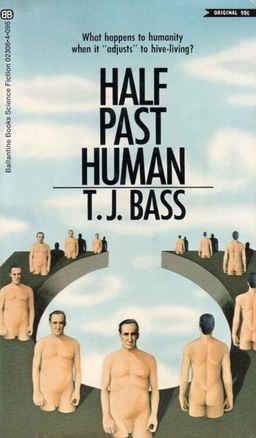
there is a shorter version available via Internet Archive, from Galaxy v 29 no 4. With a beautiful charcoal sketch by Jack Gaughan.
Jeff R
@Jeff R – Thanks! That sketch is wonderful
Half Past Human is high on my list of stuff to read. So is the The Godwhale, which I read a long time ago. I remember it being odd, evocative, visceral, occasionally disgusting, disturbing, grim, and also amusing in a bizarre kind of way. Just my kind of book, in other words.
Sometimes I find that I prefer sci-fi authors with small oeuvres, I don’t know why. Maybe because their ideas are more unique, eccentric, or concentrated; maybe because their reputations are less intimidating.
By a remarkable coincidence I read “Half Past Human” in the December 1969 Galaxy Magazine a week or so ago.
This was a bizarre story, and the version I got read like something between an outline and a drunken first draft… where and what Ball is, for example is never really described. The ES, although talked about, doesn’t seem to be in control of much of anything. And not like he intentionally wrote it that way, just he didn’t think it through!
I’m not sure if the concern of overpopulation is a driver in this book as much as it is deep in the vein of that odd class of science fiction that is obsessed with ‘the stagnation of the race!’.
It also struck me as really sexist, but unconsciously so, like Bass isn’t even aware he’s doing it. There wasn’t really a female characters in the story, (except maybe one of the doctors, who is the very definition of ineffectual) and the Coweyes– that didn’t even make sense. Love ’em and leave ’em indeed!
The version I got didn’t have the whole “polarization” bit, but there was an extra kinda pervy vibe because everyone is described by how soon or how long ago they hit puberty.
Even with all that, though, it has a compelling kind of enthusiasm for its story and ideas. And it mashes together some big ideas and makes some really bold moves!
And it’s clear that when TSR put together Gamma World back in the day they were drawing heavily from this, with the cybernetics and the robots and the security levels.
@Raphael – I just started on The Godwhale, and it is as weird, unsettling, and as blackly funny as Half Past Human.
@Adrian – I need to check out the story version. Even in the novels, though, the ES doesn’t really control things. It’s the sum total of the sole Security Level One computer and the collective administrations of the millions of shaft cities.
Stagnation is a theme I should have addressed. The hive’s great enemy in the book, points out the problem with the hive is that it’s reached a point in it’s existence where it can go on for thousands of years without any changes – until its parts, Nebishes in particular, begin breaking down and there’s no one left to repair them.
Women definitely are definitely given a little short shrift in the book as major characters. The coweyes, though, I think are introduced to show how many of the wild humans are reverting to some sort of animal state.
[…] Fletcher Vrendenburgh reviewed it over at Black Gate. […]